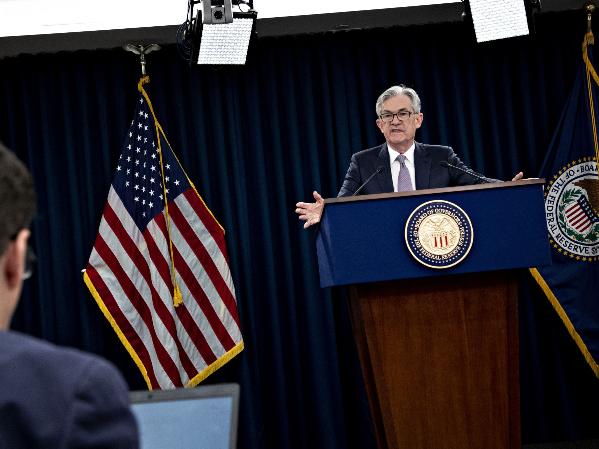Principal Update: CIO's View November 2021
Focus on Quality Exposure for 2022
By Khun Supakorn Tulyathan, CFA, Chief Investment Officer
15 November 2021

Source: Bloomberg
Year-end is approaching, and we want to lay down a few macro trends that will set the tone for key investment themes in 2022. We want to start with what’s been happening within the global monetary policy landscape. The November FOMC meeting had already passed, and the Fed is due to start tapering its asset purchase program this month, and then ending the program by June 2022. The market has priced in about two Fed Funds rate hikes by December 2022.
We believe that this is quite a reasonable development, given that the US inflation has been stubbornly high, and that the Fed may want to have the option of being able to hike its policy rate during the second half of next year if inflation doesn’t come down. Given that this scenario plays out as expected, we think that by June of next year, there is a good chance that the yield on the 10-year US government bond will break the 2% level by that time; as the financial market doesn’t usually just reflect the current state, but is always thinking ahead. It will be a suitable environment for ‘Principal Global Fixed Income Fund (PRRINCIPAL GFIXED)’ that invests solely in the PIMCO GIS Income Fund, with the master fund’s PM being PIMCO who adeptly manages duration risk to just under 2-years, meaning that the rise in bond yields will not be detrimental to the performance, like a traditional long-duration bond fund. Meanwhile, the fund’s position in various credit segments should contribute positively, providing a stable source of return for investors who prefer to stay away from equity market’s higher volatility.
On the other hand, bond yields breaching 2% should inevitably lead to a few bouts of equity market volatilities, and we believe that the best place to deploy your equity capital should be in the quality segment, with companies that have superior level of cash flows, which are characteristics of our ‘Principal Global Equity Fund (PRINCIPAL GEF)’ that invests in a portfolio of selected ETFs; and the ‘Principal Global Brands Fund (PRINCIPAL GBRAND)’ that invests solely in the Morgan Stanley Investment Funds – Global Brands Fund. These two funds are benchmarked to the developed equity market index that are predominantly US, Europe and Japan stocks, which we think will fare better next year, during the outperformance of the US dollar over emerging market currencies. Key underlying support that we believe will propel the US dollar higher is the diverging paths of US monetary policy over that of Europe and Japan, leading to stronger US dollar overall. Meanwhile, while inflation will be stubbornly high in the US, a number of emerging market countries will also be dealing with a higher inflation environment. This means that the currencies of the emerging market region could face downward pressure, due to the Fed’s QE Tapering and their own higher inflation rates. This combination has never been kind to the emerging markets. We would prefer to stick with the quality characteristic of the developed market equity for now, until the global inflation situation improves. With that, let’s hear a special topic update on some key developed market economies by Khun Waroon Saptaweekul, fund manager at Principal Thailand who manages the Principal Global Equity Fund (PRINCIPAL GEF).
Special Topic: Principal Global Equity Fund (PRINCIPAL GEF) Update
By Khun Waroon Saptaweekul, Fund Manager, International Investment Department
![]() US equities continue to make new highs on all the main indices – the S&P 500, Russell 1000, Dow Jones, and Nasdaq. Underlying economic developments have been positive compared to last year, which was heavily affected by the spread of the Covid-19. Most recently, GDP number, labor market, consumer sentiment, and PMIs have recovered. All of this have translated into a strong set of earnings surprises for the third quarter of the year. For the Russell 1000 index, corporate earnings were higher than consensus expectation by 9.01%, which was a growth of 42.21% over the same period last year. The FOMC had finally announced its intention to do the Tapering of its asset purchase program starting in mid-November and ending by June 2022, at the reduction rate of $15 billion per month until the program’s expiration. The Fed’s Chairman – Jerome Powell – reiterated his view that inflation should prove to be transitory; and that the Fed is in no hurry to raise its policy rate. We maintain our positive view for US equities due to improving economic fundamentals, and continued improvement in corporate earnings and revisions by analysts. Which means, a downside for US equities should be limited due to earnings being revised higher.
US equities continue to make new highs on all the main indices – the S&P 500, Russell 1000, Dow Jones, and Nasdaq. Underlying economic developments have been positive compared to last year, which was heavily affected by the spread of the Covid-19. Most recently, GDP number, labor market, consumer sentiment, and PMIs have recovered. All of this have translated into a strong set of earnings surprises for the third quarter of the year. For the Russell 1000 index, corporate earnings were higher than consensus expectation by 9.01%, which was a growth of 42.21% over the same period last year. The FOMC had finally announced its intention to do the Tapering of its asset purchase program starting in mid-November and ending by June 2022, at the reduction rate of $15 billion per month until the program’s expiration. The Fed’s Chairman – Jerome Powell – reiterated his view that inflation should prove to be transitory; and that the Fed is in no hurry to raise its policy rate. We maintain our positive view for US equities due to improving economic fundamentals, and continued improvement in corporate earnings and revisions by analysts. Which means, a downside for US equities should be limited due to earnings being revised higher.
![]() In the European market, the STOXX Europe 600 index also made a new high on the back of positive earnings surprise by 9.63% from consensus expectations, translating into 46.32% earnings growth rate from the same period last year. Contrary to the US Fed, the ECB hasn’t indicated its intention to do a tapering, even though recent inflation numbers have been increasing to over 4% in October. Some analysts are thinking that the ECB will hold off on doing its tapering until sometime next year, due to additional needs for liquidity support for the still precarious state of the economy. On the political front, Olaf Scholz is expected to be able to form a coalition government within this month; however, this is still undergoing negotiation, but this should be done by the time a vote is due on December 6, 2021.
In the European market, the STOXX Europe 600 index also made a new high on the back of positive earnings surprise by 9.63% from consensus expectations, translating into 46.32% earnings growth rate from the same period last year. Contrary to the US Fed, the ECB hasn’t indicated its intention to do a tapering, even though recent inflation numbers have been increasing to over 4% in October. Some analysts are thinking that the ECB will hold off on doing its tapering until sometime next year, due to additional needs for liquidity support for the still precarious state of the economy. On the political front, Olaf Scholz is expected to be able to form a coalition government within this month; however, this is still undergoing negotiation, but this should be done by the time a vote is due on December 6, 2021.
![]() Coming back to the Asian market, the Japanese market is trading range-bound between 1,800-2,000 level. TOPIX index’s earnings surprise and earnings growth stood at 20.74% and 51.95%, respectively. After the general election, which was held on October 31 2021, Fumio Kishida from the Liberal Democratic Party (LDP) won the vote as expected, leading Japan into the LDP regime for at least another four years. We believe there are a few challenges that need to be immediately tackled by the Kishida administration. As the Japanese economy has yet to recover from the Covid-19 pandemic, we expect the government to launch additional stimulus package in the next few weeks. This will be passed by the parliament before the end of this year. Furthermore, PM Kishida needs to address Japan’s macroeconomic policies in a more specific and reliable ways to make the country comply with the carbon neutrality target, which is set at the year 2050.
Coming back to the Asian market, the Japanese market is trading range-bound between 1,800-2,000 level. TOPIX index’s earnings surprise and earnings growth stood at 20.74% and 51.95%, respectively. After the general election, which was held on October 31 2021, Fumio Kishida from the Liberal Democratic Party (LDP) won the vote as expected, leading Japan into the LDP regime for at least another four years. We believe there are a few challenges that need to be immediately tackled by the Kishida administration. As the Japanese economy has yet to recover from the Covid-19 pandemic, we expect the government to launch additional stimulus package in the next few weeks. This will be passed by the parliament before the end of this year. Furthermore, PM Kishida needs to address Japan’s macroeconomic policies in a more specific and reliable ways to make the country comply with the carbon neutrality target, which is set at the year 2050.
Most recently, the Japanese government established a fund to support R&D for alternative energy investments at $17bn, which is still much less than the other major economies like US at $555bn, and Europe at €1tn. Note that Japan currently relies on coal, oil, and natural gas for more than 70% of its total energy consumption.
Preferred sectors include;
- Consumer Discretionary sector due to strong pent-up demand for goods and services post-pandemic while household saving rate remains high;
- Financials sector as FED has begun policy normalization, it’s likely that the next hike cycle will start in 2022. The market expects FED to hike policy rate two times next year. Hence, we expect US 10-year treasury to reach 2.00-2.25% within mid-22. Apart from that, we are also positive on the EV industry – both upstream and downstream companies. The Net Zero Emission policy will expedite EV adoption in many countries especially in US, Europe, Japan, and China.
Principal Global Equity Fund ( PRINCIPAL GEF)
Principal Global Equity Fund ( PRINCIPAL GEF) has main exposures in US, Europe, and Japan equity ETFs, with the three regions making up around 90% of the fund. On the valuation side, the fund has a forward P/E ratio of 19.7 times. While this might seem on a high side, this can be justified due to the high base of earnings growth during 2021 that had just come out of the negative earnings period during the Covid-impacted year of 2020. Therefore, we prefer to look at earnings growth in terms of annual average of 2021-2023, which is around 22% p.a., meaning that the P/E valuation is not as alarming as one would have initially thought.
Principal Global Equity Fund ( PRINCIPAL GEF) is suitable for investors, who want developed market equity exposure as a core global equity holding of the portfolio. Nevertheless, investors should also consider asset allocation plan that is suitable to individual’s return objective and risk tolerance level, while considering global equity exposure as a part of the total portfolio.
| Fund Recommended |
| Principal Global Fixed Income Fund (PRINCIPAL GFIXED) |
| Principal Global Equity Fund (PRINCIPAL GEF) |
| Principal Global Brands Fund (PRINCIPAL GBRAND) |


